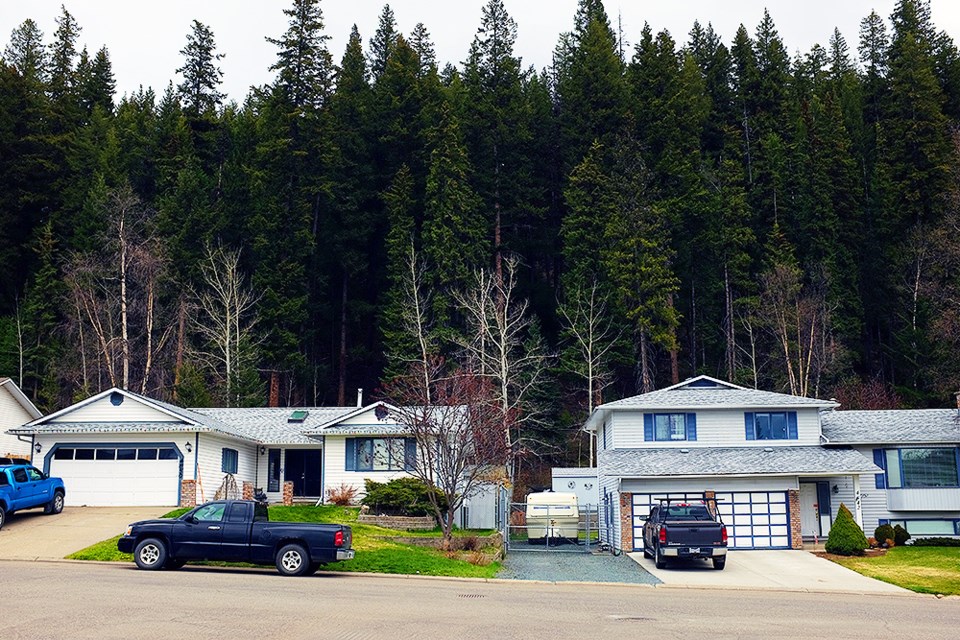As more and more people in B.C. leave big cities for smaller towns, affordability and availability of housing in the province’s smaller communities is becoming strained.
Prince George is also facing these challenges, but according to researchers, it's an example of a community that’s actively diversifying its housing stock in the face of changing demographics.
A new report from researchers at the Community Development Institute (CD) at UNBC and the Housing Research Collaborative (HRC) at UBC highlights the impacts of people migrating out of big cities to smaller towns.
Marleen Morris, co-director of CDI said they started seeing the trend of metro migration to smaller communities around the 2011 census and it has been accelerating ever since.
She noted they’ve also seen anecdotal evidence of a further increase related to the COVID-19 pandemic.
Morris said one of the issues is facing communities experiencing an influx of new residents is that most of the housing stock in non-metropolitan B.C. (any community with a population under 100,000) is that it is old and needs major repairs.
Furthermore, most homes in smaller communities are single-detached houses on large lots which reduces housing options and costs more to maintain.
“One of the other challenges is that when you look at our population our current housing stock is not what people want or need today,” said Morris, explaining that most of the current housing stock in small communities was built in the 1960s and 70s and intended for much larger families than we have today.
“Fast-forward to today and what you have is a lot more two-person households or households are much smaller,” said Morris. “A lot of our baby boomers are now retirement age, and there are also young people who are delaying having a family or who are having much smaller families.”
This equals a mismatch between smaller households and a housing stock of older and larger homes. Morris noted this mismatch impacts smaller communities' ability to attract and sustain new residents.
Morris said one of the things that inspired this new phase of research was hearing from people who turned jobs down in smaller communities because they could not find appropriate housing.
“That doesn't bode well for the economic future of the community so that those housing challenges are very real and they're out there,” said Morris.
In terms of Prince George, Morris said the city has seen a huge increase in the diversity of its housing stock since the CDI completed a housing study for the city in 2014.
“I have seen way more small-lot housing, row townhouses, and apartment condominiums being built,” said Morris.
“Now we're seeing a surge in rental, accommodation being built, and there has been a dramatic change since we did that report and Prince George is actually doing very well and one of the leading examples in terms of diversifying its housing stock over time.”
However, Morris noted there is always more that can be done, and cities should constantly be examine housing needs and how existing housing stock is meeting those needs.
For example, a recent city housing needs assessment conducted by Urban Matters in 2021 projected that the city would need more than 10,000 units of housing of all types over the next decade.
“Hopefully we will never be able to sit back and say ‘well that’s done’ because that would mean the city wasn't growing anymore,” added Morris. “It can be a challenge but it's a wonderful challenge to have.”
Morris said this kind of research can be used by local and regional governments, developers and real estate agents to help them make informed decisions about what kind of housing is needed in a given community.
“Often when people are making plans and governments are developing policies and programs they are not necessarily aware or tuned in to what the housing challenges are in our smaller non-metropolitan communities,” said Morris.
The research found that Tenant financial vulnerability in non-metropolitan B.C. communities is almost as high as in Vancouver. That’s because in non-metropolitan B.C., about 40 per cent of tenants are vulnerable, which means they pay more than 30 percent of their income on rent.
“We have significant housing issues in non-metropolitan B.C.,” said Morris, adding that in smaller communities sometimes there just isn’t a lot of choice in the market and people are forced to take what they can get.
“There are different nuances, around those housing challenges, but they are there nonetheless, and I think it's really important we recognize those,” said Morris.
“If there is one area that we're trying to do a lot of work on is raising awareness of real challenges that non-metropolitan communities face in terms of their housing.”







